Silkworm pupae are delicious but some people are afraid of them for life after eating them once.
When I was a child, on hot summer afternoons, I often sat near the kitchen, watching my mother cook on the wood stove. In the cast iron pan were tiny silkworm pupae that my mother was quickly stirring. The fragrant smell of fried onions and thinly sliced lemon leaves mixed with the fatty taste of the silkworm pupae made me swallow my saliva constantly with hunger.
Seeing that, the mother stirred the pupae and said: "This dish is delicious and nutritious, but not everyone can eat it, you hear me!"
At that time, I didn’t understand why my mother said that, I just knew that the dish was very delicious. When I grew up and worked far away, every time I went to a restaurant and saw silkworm pupae, I would order them. But no restaurant made silkworm pupae as delicious as my mother. And I missed my mother even more, meticulously preparing the rustic silkworm pupae dish, remembering the memories, remembering the reminder about how to eat silkworm pupae safely.
As much as I love silkworm pupae, my colleague Mai is just as afraid. 2 years ago, Mai bought silkworm pupae from the market, cleaned them, and then roasted them with lemon leaves as usual. The fragrant, fatty dish made the whole family excited. But 30 minutes after the meal, she started to have red rashes and itches all over her body, had difficulty breathing, and her blood pressure dropped sharply... and had to go to the emergency room. The doctor diagnosed her with anaphylactic shock due to an allergy to the protein in silkworm pupae.
Ms. Mai said she had eaten silkworm pupae since she was a child, but she did not expect that she would have a reaction when she grew up. The doctor also explained that sometimes silkworm pupae allergies do not occur the first time, but can accumulate and flare up at any time. Since then, Ms. Mai has not dared to be subjective when eating her favorite silkworm pupae.
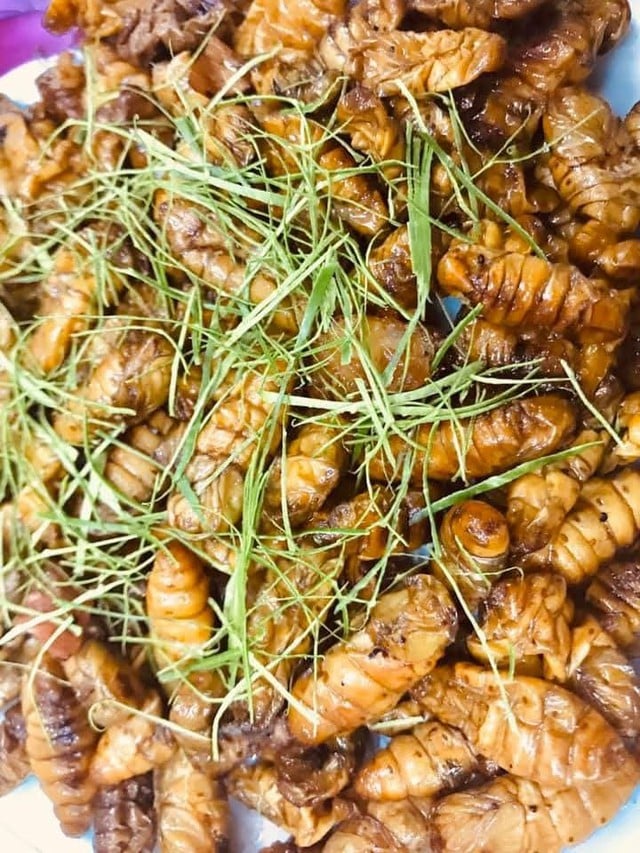
Fried silkworm pupae with lemon leaves is a rustic dish that many people love. Photo from the internet
Silkworm pupae have many uses
Silkworm pupae are the intermediate development stage of the silkworm, commonly used as a popular food in Vietnam. Silkworm pupae are small in size, bright yellow in color, have a thin shell and a characteristic fatty flavor.
Silkworm pupae are very nutritious, and have many uses in both Western and Eastern medicine.
- Silkworm pupae are rich in calcium and phosphorus, so they help children prevent rickets, support height development, strengthen bones, and prevent malnutrition...
- Elderly people, especially those with weak kidneys, constipation, urinary incontinence... eating silkworm pupae regularly and in moderation can improve digestive and excretory health.
- Silkworm pupae help reduce joint pain: Calcium and phosphorus in the pupae help regenerate cartilage, reduce inflammation and pain - especially in middle-aged and elderly people.
- Enhances male physiology: The amino acid arginine in the pupa is a precursor that helps produce nitric oxide, supports blood circulation, and enhances male vitality.
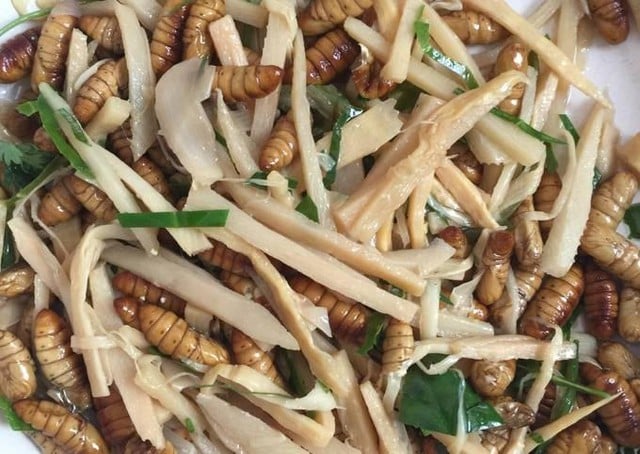
Stir-fried silkworm pupae with sour bamboo shoots is a great dish to eat with rice. Photo from the internet
Risk of allergy and poisoning from silkworm pupae
Notes when preparing silkworm pupae
Although delicious and nutritious, silkworm pupae still need to be used carefully to avoid poisoning from silkworm pupae. Specifically:
- Choose fresh pupae: bright yellow color, firm body, seamless segments, no strange smell.
- Avoid buying blackened pupae, the segments on the body are separate and not firmly attached - because the protein has decomposed and become toxic substances that are harmful to the body. Even in cold weather, only eat silkworm pupae that have been kept in the refrigerator for no more than 1 week, or in hot weather, if silkworm pupae have been left in the environment for more than 20 minutes, you should not eat them.
- Do not eat raw or undercooked silkworm pupae (because they must be cooked thoroughly to kill potential bacteria and parasites).
- Do not pre-process silkworm pupae for too long before cooking, otherwise the pupae will lose water and the protein will decompose into toxic substances.
- Do not eat silkworm pupae with seafood, because pupae + shrimp, crab, fish can cause cross-allergic reactions (people with gout should absolutely not eat pupae with seafood because it can easily cause the disease to relapse).
- Do not eat too many silkworm pupae. Only eat 2-3 times a month.
- Feeding silkworm pupae to young children should be done in small amounts at first and then observe the reaction before increasing the amount.
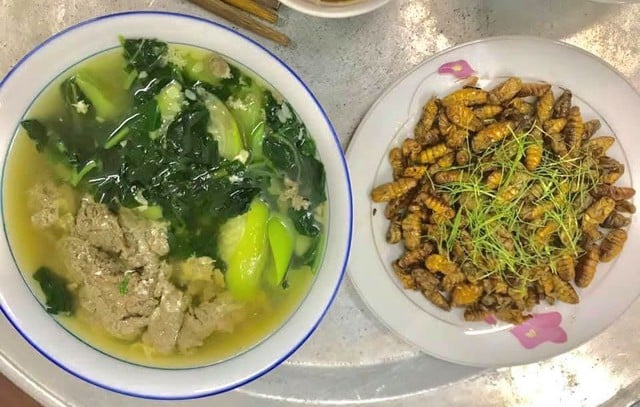
Fried silkworm pupae eaten with summer soups is very tasty. Photo from internet
How to prepare silkworm pupae
- Soak the pupae in diluted salt water for about 5 minutes, then rinse gently several times under clean running water. Be careful to rinse gently, do not rub because the pupae are soft, easily break the intestines, lose flavor and spoil quickly.
- Boil the silkworm pupae before roasting or stir-frying: Boil the pupae in water for 5-7 minutes to remove parasites and bacteria and make the pupae firm and easy to cook. You can boil them with a little salt to make the pupae more flavorful.
- Do not marinate for too long: After boiling, drain the pupae, marinate with spices for about 10-15 minutes. Do not marinate for longer because it will cause the pupae to "cook secretly", become watery, and quickly spoil (if not processed immediately).
- When frying or stir-frying: Saute onions/garlic first, then add silkworm pupae and stir quickly over medium heat (because the pupae cook quickly and burn easily).
- The pupae already have a strong flavor, so do not add too much salt. Eat immediately after processing, do not leave out in the environment for too long, and do not leave overnight (because processed pupae easily have protein breakdown, creating toxins).
- To preserve pupae, keep them tightly sealed and in the refrigerator below 5°C. However, they should only be eaten within 12 hours to ensure food safety.
- After eating silkworm pupae, if strange symptoms appear, go to a medical facility immediately for timely support.
Suggested delicious dishes from silkworm pupae
Fried pupae with lemon leaves
Wash pupae, soak in diluted salt water, season with spices. Fry onion until fragrant, roast pupae until golden brown, sprinkle with chopped lemon leaves, stir well and it's done. Traditional dish, fragrant aroma.
Deep fried pupae
Marinate pupae with egg, curry powder, roll in breadcrumbs and deep fry. Serve with green cabbage or tomato sauce, both crispy and delicious.
Stir-fried pupae with pickled bamboo shoots
Stir-fry pupae with garlic, then add pickled bamboo shoots and stir well. Season with fish sauce, add coriander and chili. The fatty taste blends with the light sour taste, very delicious with rice.
Source: https://giadinh.suckhoedoisong.vn/mon-nhong-tam-rat-ngon-nhung-me-dan-toi-phai-biet-mot-dieu-keo-mot-lan-an-sai-ca-doi-so-hai-172250709171848335.htm


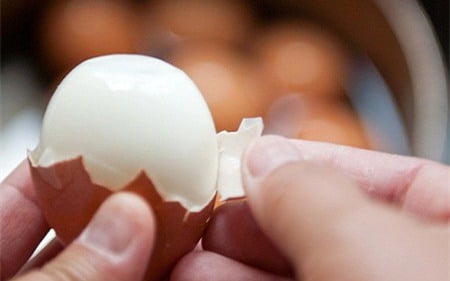
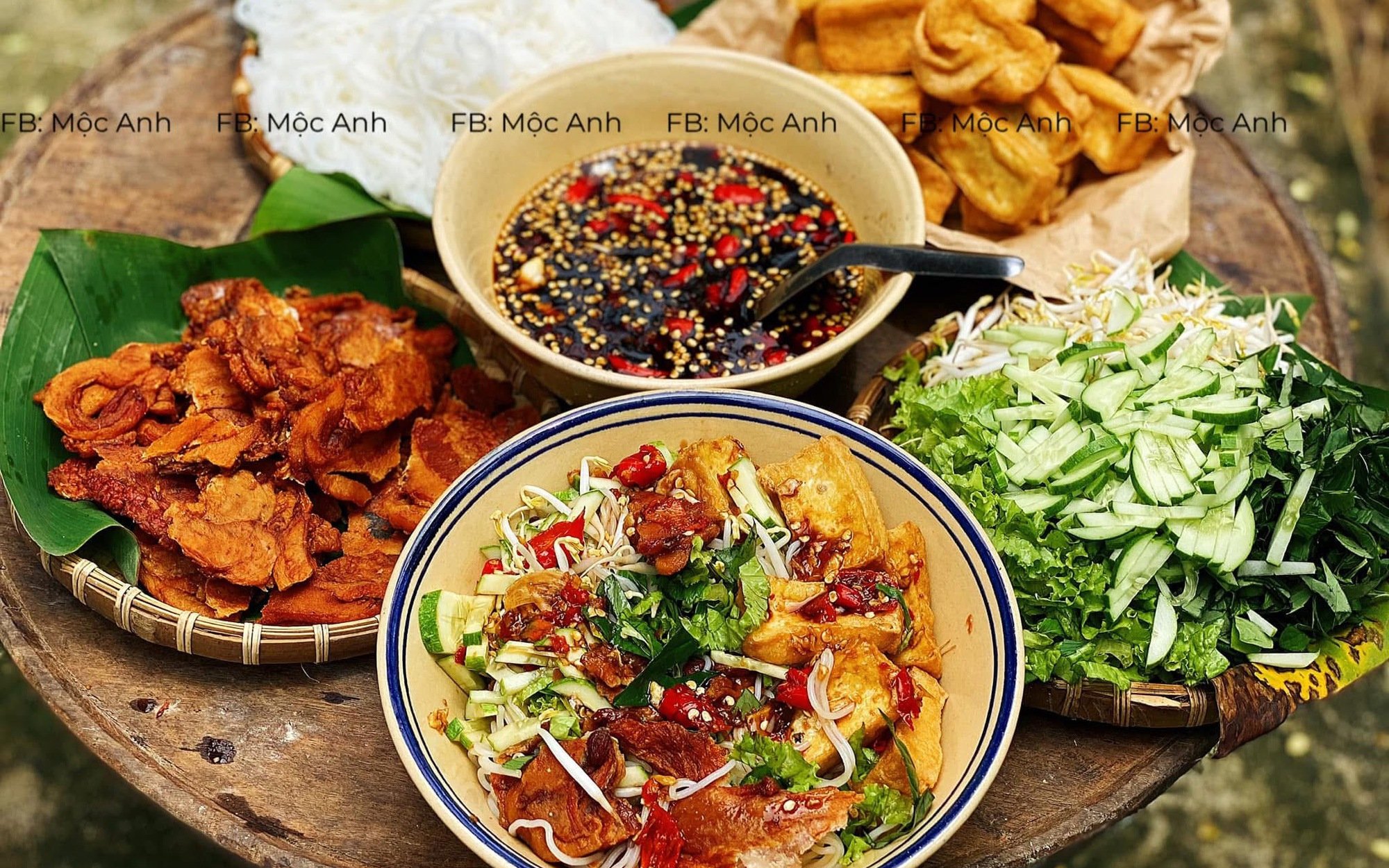
























































![[Maritime News] Treasury Department Targets Diverse Networks Facilitating Iran's Oil Trade](https://vphoto.vietnam.vn/thumb/402x226/vietnam/resource/IMAGE/2025/7/14/43150a0498234eeb8b127905d27f00b6)









































Comment (0)